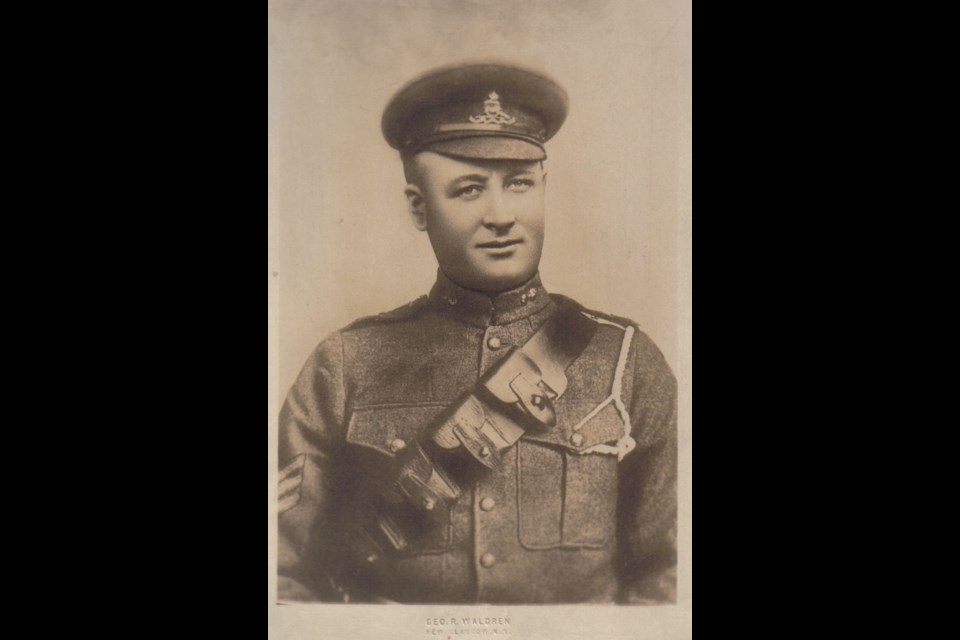By John Hetherington
November 11th, 2018 will mark the 100th anniversary of the end of the Great War. For many Canadians, there are memories of family members who served and returned home and those who didn’t. For Gord McKay of North Bay, it has been a lifelong dream to find out what happened to his Great Uncle after he enlisted in 1916.
Last year Gord McKay contacted me and said that he wanted to join my battlefield tour and he was interested in retracing the footsteps of his Great Uncle Sgt. Gordon McKay. During the spring Gord and I carefully researched the route of his Great Uncle from where he landed in France in 1916 to the places where his unit moved to and places he fought at along the Western front. With the use of war diaries, his military personnel service file, and original trench maps we were able to pinpoint and visit many of the locations where his Great Uncle went into action. The final piece of information was related to the campaign that would later be referred to as “Canada’s Hundred Days” during the last great allied offensive of the war. Fighting in this campaign was Sgt. Gordon McKay, serving in the 36th battery of the 9th brigade Canadian field artillery.
On August 29th, 2018 our group gathered in the small Commonwealth military cemetery near the village of Monchy just east of the city of Arras in France. Gord gave me the letter that had been sent to Sgt. McKay’s father written by the battery Major and I read it to the group at the gravesite.
Dear Mr. McKay;
“On September 1st the battery was in position near Vis- en- Artois. We were bombarding the enemy’s wire entanglements in the Drocourt – Queant line for the battle of the morrow which was to break the Hindenburg line. Gordon was in charge of his gun and detachment. The enemy shells were dropping around us but not close enough to cause any uneasiness and it was very necessary that our task be carried out in any case. I had just left Gordon when Lieut. D. L. Teed came out to the gun with a correction at the same instant a shell fell almost directly at the gun. Gordon and Mr. Teed were almost instantly killed and one of the gunners mortally wounded.
It was a terrible shock to me as both were particular friends of mine. Gordon was very popular in the battery and his death has cast a gloom over us all. He was a splendid artilleryman, very faithful and efficient and would have been shortly recommended for a commission. I know that it must be a great blow to you and your family and I wish that I could in some way alleviate your great sorrow but all I can offer you is my earnest and deep sympathy and that of every member of the unit”.
Major D.A. McKinnon, 36th battery 9th brigade CFA.
The war ended just 72 days later. McKay and Teed were just two soldiers out of 6,800 Canadians who would die fighting during "Canada’s Hundred Days.”
Thousands of these personal letters arrived at the homes of the next of kin throughout the war; others received just a telegram from the war office. Sharing this letter with the members of our group on a misty morning in this small cemetery in the middle of a farmer’s field was a very special moment for all of us.
John Hetherington is a retired history teacher and battlefield guide. He can be contacted at 705 492 6975 and [email protected]



.jpg;w=120;h=80;mode=crop)